This question is from a confusion from this thread.
Assume that you have the opamp circuit shown below. Also assume that the opamp is ideal and you don't know the value of R1, R2, R3, R4.
Now you do two measurements:
- Apply a voltage
1VbetweenVpandVnand you measure the currentI1 = I2 = 2.5mAas in the image.
- Apply differential voltage
V1 = 1Vand common mode voltageV2 = 1Vas in the image below. You cannot measure the currentsI4andI5directly. The only current you can measure isI3. Now you look at the ampere meter and seeI3 = 1.6445mA.
Question:
Can you calculate the value of I4 and I5 from the two measurements above?
In this post Andy aka calculated it like this:
I4 = I1 + I3/2
I5 = I2 - I3/2
This gives the correct results in that case, but what is the theory behind it?
COMMENT:
What Andy did looks a bit like superposition but actually it is not.
With superposition you would do it as follows:
First you set V1 = 0 and calculate I4, I5.
Next you set V2 = 0 and calculate I4, I5.
Now you notice that the circuit is different from Andy aka's circuit in the first case above as the node Vnis now grounded.
The current through R1, R2 is now not 25mA anymore.
Finally sum I4, I5 from two cases above to get I4, I5 caused by the two voltage sources.
Note that I'm not asking how to calculate voltages and currents at any nodes and branches like what Jan did. I can easily do that using circuit analysis techniques like nodal, mesh analysis, etc.
It seems like everyone misunderstood my question. I'll express it again in the image below.
